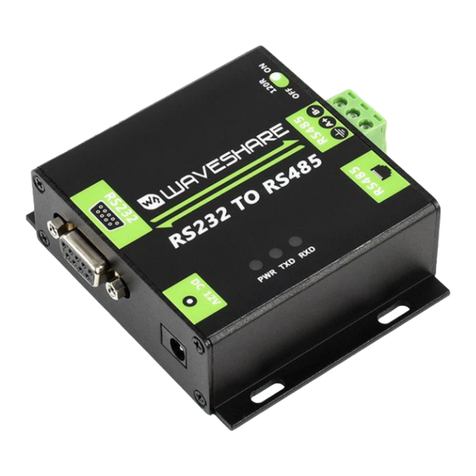
485 TO ETH (B) User Manual
8/36 www.waveshare.com
The parameters here are as follows:
1. The figure below shows the first JSON keyword: "1." here means the first few JSON
keywords of the current design interface, if the second one is "2.", if it is a node nested
under the second JSON That is "2.1", and so on.
2. Already added: If it is checked, it means it has been added. When viewing the configured
information, a check will appear, indicating that it is in the editing state. If there is an
unchecked one, it is in the added state.
3. Corresponding JSON keyword: the name of this JSON node.
4. Data source: select the source of JSON data
a) Modbus RTU: For example, in the form of CurrentW: 123.45, it means that the data
comes from a certain Modbus RTU table and is collected through the serial port. The left
half of the figure is related to the design of Modbus RTU parameters.
b) Fixed string: For example, in the form of DevName: "MyDev", enter MyDev in the fixed
string on the right, and the JSON name is DevName, so that a fixed string of JSON nodes
can be generated.
c) Device ID: If the JSON node name is DevID, the string of the sent node is DevID:
"285301020304", where "285301020304" is the MAC address or unique number of the
device.
d) Current time: If the JSON node name is ColletTime, the uploaded string is ColletTime:
"2019-05-13 22:23:31". The time is the time obtained by the system through the NTP
protocol.
e) Embedding JSON: If the node name is Alarm, the format of its upload has
Alarm: {temp1: "25.1", temp2: "26.2"}, that is, the content of Alarm is still a JSON
collection
5. Modbus related settings
a) Slave address: Modbus table address.
b) Modbus function code: currently supports 03 and 04 function codes.
c) Register address: the corresponding 0 here.
d) Data length: This corresponds to 4 bytes.
e) Data format: This corresponds to an unsigned integer.
f) Keep the decimal point: 2 digits are reserved here.




























